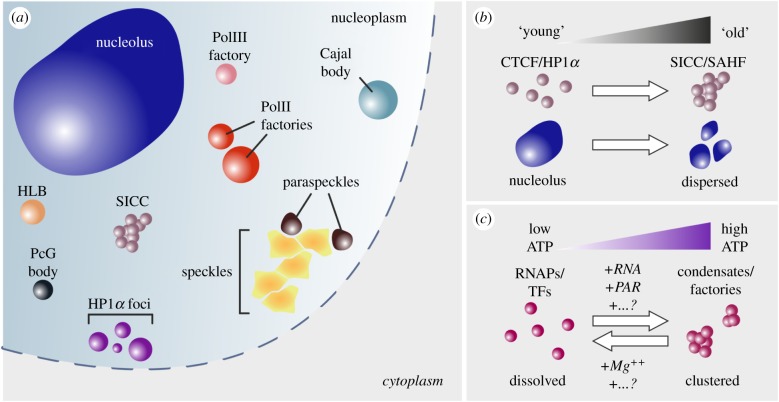Figure 1.
Phase separation in the cell nucleus. (a) Cartoon depicting different kinds of membraneless entities in mammalian cell nuclei, ranging from the large nucleolus (blue; 0.2–3.5 µm) to transcription factories (red/pink, including histone locus bodies, ‘HLB’, orange; approx. 0.1 µm), Cajal (green; 0.3–1.0 µm) and Polycomb bodies (black; 0.2–1.5 µm) or splicing speckles (yellow; 20–50 nm) and paraspeckles (brown; 0.2–1.0 µm). (b) Nuclear phase-separated entities such as SICCs or SAHFs, forming on the basis of HP1α (purple in (a); less than 0.5 µm) or CTCF (light purple in (a); 0.5–1.5 µm), become most evident under conditions of cellular ageing. At the same time, the nucleolus changes in shape and dispersion in chronologically aged or longevity-related conditions. (c) Persistence of elevated nuclear ATP levels, in conjunction with chromatin/protein modifications and high local RNA titres, aid in the maintenance of supramolecular condensates (factories) by TFs and the general transcription machinery, while low ATP levels, Mg++ cations and additional insofar unknown factors will deter and/or reverse such phase separation in the nucleoplasm.

